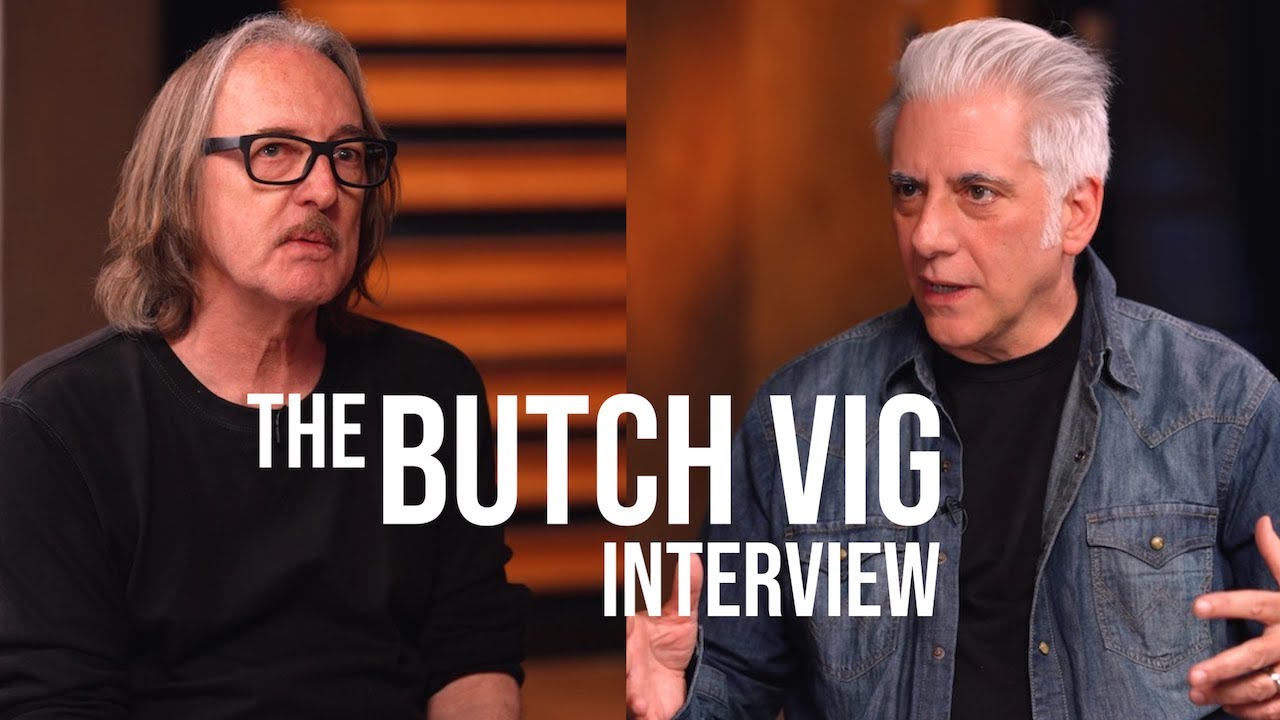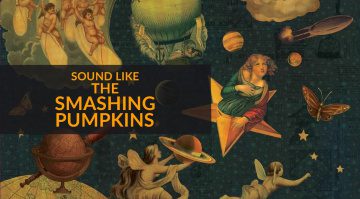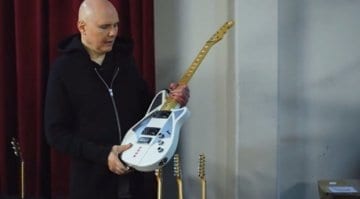Avant Grunge: How To Sound Like The Smashing Pumpkins
The Smashing Pumpkins broke through in the early 1990s, with a complex grunge sound influenced by both classic and progressive rock.
The Chicago rock outfit made up of Billy Corgan, D’arcy Wretzky, James Iha, and Jimmy Chamberlin had a fully formed idea of what they wanted to sound like early on.
However, it was their collaboration with producer Butch Vig on the first two albums that would solidify their place in the mainstream. This in turn provided the perfect platform for the creation of Mellon Collie and the Infinite Sadness (1995) with Mark “Flood” Ellis.
The Smashing Pumpkins Sound
The Pumpkins’ debut record Gish, was the first time the band worked formally with a producer. Likewise, for Butch Vig, it was the first time working with a band that really wanted to put hours into the performances and days into the mixing process.
In time, this collaboration would take both band and producer to new and unexpected heights in their respective careers. Let’s find out more about the production and some of the key gear choices during the recording process.
Harrison 32C
Gish (1991) was recorded at Butch Vig and Steve Marker’s now-legendary Smart Studios in Madison Wisconsin. They had bought a secondhand Harrison 32C, which they would later upgrade with another 32C and flying faders for 64 total tracks.
The album was tracked and mixed to tape on a 32C, which certainly contributed to the raw overall sound. Harrison consoles are known for the musical nature of their EQs as well as the pleasing sonic overtones created when slightly overdriven.
Today, Harrison Consoles has a range of plug-ins modeled on the 32C including:
However, if plug-ins aren’t enough for you, nothing beats the sound of a real US-made analogue console.


Fender Stratocaster
The almost Hendrix-style screaming lead guitar tone was one of the fundamental elements of the Pumpkins’ sound from the very beginning. Corgan also used a 1971 Mustang in parts of Siamese Dream, but the Stratocaster was a consistent choice.
He liked the 1974 model in particular because of the overall weight of the instrument. A heavier Strat often meant that the tone of the wouldn’t be as lively, but he still managed to find a suitable version like the one with DiMarzio pickups he used in the Mellon Collie era.
US-made Fender Strats are still some of the most sought-after guitars around. So if you’re a stickler for authenticity, it’s a good place to start.


Electro Harmonix Big Muff Pi
The Big Muff pedal was introduced in 1969 at the height of the guitar arms race, where guitarists like Hendrix and Townsend were constantly seeking new ways to reproduce a larger-than-life rock guitar sound both in studio and on stage.
Though technically not a fuzz pedal (EHX refers to it as a “distortion sustainer”), the two clipping stages compress and saturate the signal in a very similar way to a fuzz distortion pedal.
Billy Corgan used a range of pedals, including digital preamp+EQ units, phasers, and distortions like the MX-142. However, the Big Muff was a constant point of reference within his effects chain.


Ampeg SVT
Although Smart Studios engineer Doug Olson‘s modified Fender Bassman was a favourite of many bands that recorded there, the SVT was the preferred choice of the Pumpkins in the early days.
With more studio time at his disposal, Butch Vig explored using multiple mics on cabinets which became a feature on both Gish and Siamese Dream.
As a modern alternative, SVT Heritage Special Edition gives you dedicated channels for both 1969 and mid-1970s SVT models.


API Lunchbox
Butch Vig was an avid Lunchbox user early on in his working relationship with the Pumpkins. The versatile and relatively inexpensive modules provided him with a pair of dynamics or EQ processing for both tracking and mixing.
This meant he could give the kick and snare an extra dose of sweetening on the way in, or sculpt the sound of the DI and Bass amp before summing them to a single track on the tape machine.
The API 500-series format continues to grow, with new modules added each year. All you need is a chassis, and you can build your own channel strips with dynamics and EQ modules of your choice.


Which of your favourite artists would you like to see in this sound-alike series? Please let us know in the comments below!
More about The Smashing Pumpkins:
- Smashing Pumpkins Official page
- Billy Corgan on Joe Rogan
- More sound-alikes
Videos:
*Note: This article contains promotional links that help us fund our site. Don’t worry: the price for you always stays the same! If you buy something through these links, we will receive a small commission. Thank you for your support!
- Harrison 4032C: Preservation Sound
- '74 Fender Stratocaster: Wright
- Electro Harmonix Big Muff Pi: Anasounds
- 1972 SVT Blue Line: Guitar Chimp
- Lunchbox fully loaded with a preamp and several dynamics and EQ modules.: API
 3,8 / 5,0 |
3,8 / 5,0 | 


















